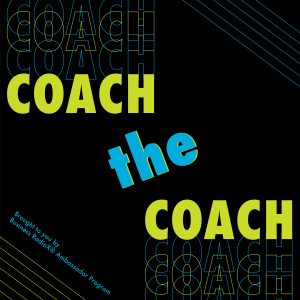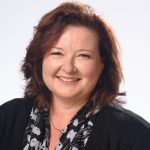 Kat Marran is currently the Interim Chief Executive Officer for the Girl Scouts of Greater Atlanta.
Kat Marran is currently the Interim Chief Executive Officer for the Girl Scouts of Greater Atlanta.
She started her new role officially on July 12 and brings a wealth of corporate experience from a successful 29-year career at United Parcel Service (UPS.)
She recently retired from her UPS role as Vice President of Marketing where she led large marketing and supply chain programs, budgets, projects and teams both across the US and Internationally.
She has a positive reputation for bringing forth the best in her teams through competent and energetic leadership and creativity.
Connect with Kat on LinkedIn.
What You’ll Learn In This Episode
- About Kat’s experience as a board member
- Leadership moments
- Her vision for GWBC’s future and what’s next for her
TRANSCRIPT
Intro: [00:00:04] Broadcasting live from the Business RadioX Studios in Atlanta, Georgia, it’s time for GWBC Radio’s Open For Business. Now, here’s your host.
Lee Kantor: [00:00:19] Lee Kantor here. Another episode of GWBC Open For Business, and this is going to be a good one. Today on the show, we have Kat Marran. She is the Interim CEO with Girl Scouts of Greater Atlanta and is rolling off the board at GWBC. Welcome, Kat.
Kat Marran: [00:00:35] Hi, how are you?
Lee Kantor: [00:00:36] I am doing well. Well, before we get too far into things, let’s talk about the Girl Scouts of Greater Atlanta. How did that opportunity kind of bubble up for you? That seems like an exciting adventure.
Kat Marran: [00:00:48] It has been an exciting few months. It’s relatively new, but yet old for me. I’ve been on the board of Girl Scouts for about five years. And in June of this year, as things happened to have the tendency to happen, I was actually leaving UPS, which was my 30 year long career, to go do something else. And Girl Scouts popped onto the radar and I stepped in to fill a position as interim here since July.
Kat Marran: [00:01:15] And it’s been an amazing transition from a for-profit to a nonprofit. Lots of learnings here. Lots of things I get to put to use from my old career. But it’s a different dynamic and it’s definitely a different color. I’ve switched from lots of brown in my wardrobe at UPS to lots of green and blue at Girl Scouts, so it’s kind of fun in many ways.
Lee Kantor: [00:01:34] But you are attracted to those earthy colors, so it’s kind of on brand.
Kat Marran: [00:01:39] I am. I am. I’m a fall colored analysis, those who got to do that in the 80s and 90s, that’s for sure.
Lee Kantor: [00:01:45] Now, your background at UPS was in marketing, is that a big change from going to the C-suite from kind of a marketing lens?
Kat Marran: [00:01:54] It’s an interesting swing. But even at UPS and marketing, there’s so many different capacities that I got a chance to be a part of for 30 years. And it all comes down at the end of the day, I think, to leadership in the first place. So, I’m still leading a large team here at Girl Scouts like I did at UPS. It’s about the dynamics of how you see the bigger pictures. The best part about it, though, is I get to make more of the decisions directly.
Kat Marran: [00:02:18] When you’re in a big bureaucracy, as good as it is, there’s still a bigger boss. When you’re the the CEO or the acting CEO in an organization, you get both the fun and the responsibility of those decisions. So, that’s been the biggest difference. But marketing had created an environment at UPS for me to learn a lot about how the world works and how it plays out in different ways at UPS and around the globe and through operations, et cetera, that holds true here at Girl Scouts as well.
Lee Kantor: [00:02:45] Now, you mentioned you were there for 30 years at UPS, a large enterprise. In your career, at what point did you go, “You know what? I have to start getting involved with organizations like GWBC, like Girl Scouts. I have to take leadership roles”? At what point did that kind of click and say, “Okay. I have to kind of lean into this if I want to achieve my goals of moving up this kind of corporate ladder”?
Kat Marran: [00:03:12] It’s a really good question, Lee. And I thought about if I could do something differently, what would I do or how do I tell people. I will tell you, though, at UPS we always had a foundation of volunteerism and philanthropy. So, even from early days in my careers at UPS, I was always a volunteer. And within that context, I kind of always would build over time.
Kat Marran: [00:03:31] But specifically, it was probably in my back end of the year, so probably about seven years before I left UPS, seven to maybe eight years, I really thought about taking greater leadership positions out in the community. And I was encouraged by both bosses at the time, as well as colleagues who had been involved in some of these type of organizations, inviting me in to learn some of those things. And at that point, I enjoyed it so much that I maybe overindulged here and there by saying yes to too many, but that was a good thing because I get to learn where my line was. but it also made me reflect on why I didn’t do it earlier.
Kat Marran: [00:04:09] And so, that’s my message out to a lot of my mentees, or to a lot of younger people or women is even in those middle stages of your career, when you feel exhausted because you’ve got everything going on, you got family, you’ve got work, you’ve got everything, you got your head down doing everything, don’t forget about the areas around you and the communities who, number one, can use your expertise at whatever levels, and two, that you could develop faster when you put those things to use with those groups too. There’s lots of learnings out there.
Kat Marran: [00:04:37] So, had I to do it over again, I would have done it earlier. But seven years or so gave me enough experience and connections and networking to create my next journey as it stands right now with Girl Scouts as a matter of fact.
Lee Kantor: [00:04:50] Now, how did you kind of choose which organizations to lean into? Like, I’m sure somebody in your role at that organization could have chosen any organization, and they’d be happy to have you. How did you, yourself, kind of narrow down the list in order to choose the ones you did?
Kat Marran: [00:05:12] Lee, another good question. To me, it came down to a few things. One, the practical side of me looked at it and said, are there organizations out there that – this sounds maybe strange – I will not feel guilty about taking time away from work to go do them? And what I mean by that is I needed to see for myself that there was some overlap of activity to the day job as well as this volunteer piece or to this other leadership capacity.
Kat Marran: [00:05:40] So, a lot of times I fell into spaces like GWBC, quite honestly, because I was working at that time in a part of UPS where we were developing our marketing programs for diverse customer groups. And in that, there was a lot of intensity and a lot of time spent on women-owned businesses, et cetera. And so, my day job was that, and I intersected in some capacity outside of that with women organizations. It became a natural fit to me to see efficiencies, if you will, as well as a passion and a learning possibility.
Kat Marran: [00:06:16] So, my first decision on when and where was around practicality with a little passion. As I got into some of these and got more coming through, it became how do these other areas make me happy as well to be a part of? And can I make a big enough impact on it? So, that’s when the Girl Scouts came in. That’s when I got involved in a women’s angel venture group called Golden Seeds as well, because I started to think about how my expertise could push those even forward, and at the same time I could get something out of them that wasn’t in my day job in that sense.
Kat Marran: [00:06:55] So, financial learnings from the investment organization, working with girls, which was not my foray nor my experience. I don’t happen to have children, so this was another way to think about giving to the community, but giving to myself at the same time. That’s how it expanded over time.
Lee Kantor: [00:07:11] Now, when you first joined your first board, can you talk about how that went? What was your onboarding like? How were you kind of going to make your mark? Did you go in there kind of just, “Hey, let me just listen first and just kind of get the lay of the land” or did you come in saying, “Okay. These are the things I think we can do. There’s opportunity here.” Like, how did you kind of ramp up?
Kat Marran: [00:07:38] Oh, it’s funny, if you ask people who sat with me on that first board meeting, they would definitely not say I was quiet. But I will say that my first onboarding of the first board happened because I had a specific area of marketing, as a matter of fact, that was seen as valuable to that board, whereas the rest of the board came from different other experiences and different backgrounds. So, they were really seeking somebody with my background.
Kat Marran: [00:08:03] So, I didn’t go in immediately quiet. I did listen for sure. I tried to read as much as I could about the organization and get better affiliated with it and the other members of the board before the first board meeting. But I did feel like I was thrown into the deep end a little bit, but I’m okay, I can swim. And I knew that they had wanted me there to be vocal, to be questioning the traditional, because I was going to come from a different experience.
Kat Marran: [00:08:28] So, I think the onboarding could differ for each person depending on what the board chair and what the CEO talk to you about as well as to your purpose on there. Why you? What do they hope you bring to it? And then, if you know what that is, then you’re onboarding kind of comes in the right context and you’re not just floundering in that deep water, if you will.
Kat Marran: [00:08:52] And then, I think having a good board mentor assigned to a new mentee, if you will, of a new board member is really helpful to help, one, get that new person involved pretty quickly. But two, it actually keeps the efficiency of the board meetings running because, oftentimes, new people, by no fault of their own, they’re just trying to ask the logical questions that are coming up in their head, but they’re almost too basic sometimes. So, if you have a mentor who can really help them get through some of those pieces to the details of how the organization works, then you can really get to the governance factors that you need to do on a board meeting and be efficient about it, rather than getting into places that everybody else knows the answers to, but the new person doesn’t. So, it’s a fine line when you come on and you onboard a person. But I’ve learned a lot each time that I’ve gone on to a board as to how to get better at it.
Kat Marran: [00:09:42] There’s also third party organizations out there. I have not necessarily had lots of interactions with them, but there’s organizations like on board and some other women board associations who will help train women and people how to be on boards effectively and be most useful as quickly as possible. So, there’s different things to learn. My experience was kind of grassroots.
Lee Kantor: [00:10:03] And let’s talk specifically about GWBC, is there any memory or any thing that you did or the board did or the organization did that kind of left a mark that’s impactful or rewarding?
Kat Marran: [00:10:19] Many. I think the camaraderie of the boards that I worked on with GWBC was really unique in that it was a combination of corporate people as well as WBEs or women enterprises, women-owned businesses. And it was nice to see the interaction and the learnings from both sides, because we all come at things with our own expectations and history and experiences. But to be able to professionally think about it from another angle, I always value that in sitting in those board meetings or having those other side meetings or the committee involvements.
Kat Marran: [00:10:53] I will say the fun part was always our galas. We also are people who love to dance and get out there and have a good time. And that’s kind of nice to let your hair down. So, I always enjoy GWBC for bringing the fun out as well. I think Roz takes that very seriously. She’s got a good team that does that.
Kat Marran: [00:11:10] But I’d say the final piece, one of my favorite takeaways, is meeting with so many of the members of GWBC and the women-owned businesses themselves, and finding the spark that makes them excited and makes me excited. So, there were several of them that I’m still actually friends with today, and still helping in some ways for them to continue their business journey and where I can be of advantage for them. It’s kind of nice to kind of be that consultant when they need it.
Kat Marran: [00:11:40] But it comes back the other way, so some of them are now becoming more and more successful. And I’ve got one company that I’ve worked with for several years that came through GWBC, I helped them get settled in what they needed to do, and now they’re reciprocating. They’ve got some good things happening, so they’re offering some help to me at Girl Scouts. So, it created a continuous community, and that, I will value for a long time.
Lee Kantor: [00:12:03] Now at GWBC, I think one of the main benefits for the members are that kind of bridge to enterprise organizations. Is there any advice you would give maybe on both sides of the table there? Any advice for the enterprise level executives and companies to be partners with GWBC and also the WBEs to kind of make themselves attractive to those enterprise level organizations. Can you share maybe some advice on both sides of the table?
Kat Marran: [00:12:37] Oh, that’s good. From the partners perspective, again having come from a large organization but not necessarily being in the procurement side, I will say I’ve watched in the last six or seven years since I’ve been a part of GWBC a great advance on the corporate side, on the partner side, to really push their own organizations to be open to these diverse companies in all different kinds of ways, and to shake things up not just for cost reasons, but for quality reasons, and not just solely to fill a diversification checkmark. And that’s been great. The companies have been advancing and seeing that, and they’re able to play it back to themselves and to their constituents or their stakeholders.
Kat Marran: [00:13:19] With ESG being such a bigger and bigger conversation these days, I think it matters to corporates in a deeper way than it did 20 years ago. Supplier diversity is not just checking the box anymore. So, number one, I hope that all companies are thinking about that. And even if we start with that concept of a big company, now play it to the mediums, and even to the WBEs at some point, everybody should be thinking about their part to play and lifting the rest of the boats. And you’re never too small to have that ESG in your DNA.
Kat Marran: [00:13:52] So, I think I would position that most partners out there, regardless of size, should be thinking about how do they make sure that their procurement is fair, equitable, which may not necessarily mean that everybody gets the same shot, some people might need a little bit more help. Mentoring is a good way that a lot of the corporates do that. I know UPS has been doing that for a while as well. So, I love to see the partners become more than just a platform for application that they really actually reach out and help the WBEs to figure out what’s going to make a difference in their organization.
Kat Marran: [00:14:28] For the WBEs, outside of what I already said, which is they, too, can be a part to play in their own ESG component. I think the greatest thing that I saw really start to get off the ground is when WBEs are helping each other. The corporate timeline for procurement is almost so long and can be really grueling, and a lot of the smaller businesses put so much weight on them, they spend so much time and they end up either being disappointed after all that investment of time and energy and/or they get the deal and that’s scary in its own right. They get the deal and then they don’t get paid really quickly sometimes. So, all of that is a real burden on them until they get enough magnitude.
Kat Marran: [00:15:11] What’s the low hanging fruit is working amongst the WBEs directly. And so, my best suggestion to the WBEs is don’t miss the trees in front of you by looking for the big huge forest out there. Sometimes it’s better to take off the small trees and figure out how you’re going to work your way to that forest by working with other people who get you and to understand what you’re going through.
Kat Marran: [00:15:34] And I think that’s one of the most powerful observations I’ve started to see of late, that the WBEs actually are recognizing their network in mass can be stronger to some degree than that one big deal they might get from a big organization. And that they spend a lot of time working on it. So, it’s a balancing act, of course. Those would be the two key things I think I would bring forward.
Lee Kantor: [00:15:55] Now, any advice for a person out there that maybe was in your shoes seven years ago when you’re deciding, “Okay. I’m going to join a board,” why should they pick GWBC? What would be the best fit for somebody? Is it that they have, like you mentioned, the alignment of goals for the corporate and the alignment of goals personally. So, how would you kind of pitch the GWBC board opportunity to somebody?
Kat Marran: [00:16:25] So, if I get two hats, so if I happen to be a WBE, I think the benefit of coming to GWBC once you’ve got a little bit of grounding in those things I just talked about, how you work the network with other WBEs, how you understand the procurement process of big companies, being onboard like GWBC helps get those experiences magnified. And hopefully, if you’re ready to give back in some way or you’re wanting to lead a little bit more, then being on a board of GWBC is going to change the direction for the good and help bring those experiences to the programs that GWBC offers, the type of development that it creates, the intersection points that it has to have.
Kat Marran: [00:17:09] It needs to evolve in some degree, I think, beyond certification. And I think a WBE who sees that in a bigger picture will be highly influential and can make a bigger mark. I hope that it’s not solely they want to join the board to open up those corporate relationships, that some of that can help, but really it should be beyond that. It should be what else are they really ready to do to define how women organizations out there can thrive at faster and stronger levels. So, that would be the pitch to the WBE is ready to give to the bigger network.
Kat Marran: [00:17:40] For the corporates, if I was a person thinking out there, again, to me, it depends on your discipline area that you’re really interested in or what you’re trying to pursue. Any one of them, whether it’s marketing or finance or procurement or HR, et cetera, legal, all of them have to have a part to play in being on a board. And so, for your own edification of what your discipline means in a different context, outside of your day job and outside of your own company and industry, I think, is a compelling reason to go learn how to put it to use in a different way.
Kat Marran: [00:18:12] And so, for your self-development, a GWBC is all about business. It happens to be a nonprofit in its own definition, but it’s all about business, and all of those disciplines are needed and useful. And I think if you are thinking about your own development, that’s a good way to think about how you apply your skills uniquely and to open up some things that you hadn’t. And I think then you get to take it back to your organization as well to let them know here’s what you’re getting on this business board. And that’s influential as well, because it can open up some things internally for you that might not have been there because people were seeing you in the same capacity. You’ve now broken free of that by bringing a new version of yourself back into the organization, because you’ve seen yourself outside of the organization.
Kat Marran: [00:18:57] So, to me, that’s the benefit to a person being on the board. And then, obviously, what you bring to that board is all of those experiences, all of that network, all of that positivity. Anybody on GWBC is very welcoming to all of those experiences. So, it’s a good board to join.
Lee Kantor: [00:19:14] Now, in your role as Interim CEO of Girl Scouts of Greater Atlanta. What do you need more of and how can we help you?
Kat Marran: [00:19:22] Oh, thank you for that question. There are so many great things that we do at Girl Scouts of Greater Atlanta. We cover a very large portion of the state, we represent 34 counties and give or take about 35,000 members of both adult and girl members. So, when we think about the things that we need most, we need to make sure that we are still relevant to what the girls around our counties need, and so we’re building programs all the time. So, there is, of course, always a fundraising component of everything that we do.
Kat Marran: [00:19:55] But if I put that aside to people who might be listening to this call and beyond that, we really want to call out to anybody who was a Girl Scout in any place around the country, or who would like to learn more about Girl Scouts to come talk to us. Our anniversary is coming up next year, it’s 100 years of one of our camps here in Mableton, Georgia. It’s a 200 acre beautiful camp, but it needs some love, needs some attention. So, we want a big 100 year celebration of come back to Girl Scouts. So, definitely invite people to come back.
Kat Marran: [00:20:25] And we love volunteers of all ages and all genders. We don’t do this work that we do without a severe amount of important volunteers at all types incremental, seasonal or long term like troop leaders. So, we’re always looking for people who are interested in giving some time to these girls and helping them build the courage, the character, and the confidence that we need them to have to be the next leaders of the generations to come. So, any way you want it, we would love as much support for Girl Scouts as possible.
Kat Marran: [00:21:00] It’s a great pipeline, by the way, for entrepreneurs. Those cookie programs that everybody loves so much, they’re not just about the cookies, they’re about teaching girls how to build their own business. What’s a better way to get more GWBC members and then to get new Girl Scouts as well.
Lee Kantor: [00:21:17] Yeah, I think that the cookie program is one of the greatest ways to ease someone into selling, to teach them how to sell and to feel confident in selling. And that’s foundational for whatever they’re going to do later in life. I mean, I think that’s a brilliant program.
Kat Marran: [00:21:35] It is. It teaches them also how to handle rejection a little bit too. That’s a big part of sales, isn’t it? How do you pivot and how do you find another way to be comfortable in the no’s as much as you can celebrate the yeses as well.
Lee Kantor: [00:21:48] Right. Well, if somebody wants to connect with the Girl Scouts of Greater Atlanta, what’s a website?
Kat Marran: [00:21:54] gsgatl.org is our website. That’s Girl Scouts of Greater Atlanta, gsgatl.org. Or they can certainly find me at kmarran@gsgatl.org and/or through LinkedIn, whatever works for anybody. Come find me, I’m happy to have the conversation.
Lee Kantor: [00:22:14] Well, Kat, thank you so much for sharing your story today. You’re doing such important work and we appreciate you.
Kat Marran: [00:22:19] Thank you very much, Lee. I appreciate always having been part of GWBC and will continue to be an advocate for that group and for the WBEs in it and for my board partners. So, they to have all of my appreciation and admiration as well. I look forward to further conversations.
Lee Kantor: [00:22:36] All right. This is Lee Kantor. We’ll see you all next time on GWBC Open For Business.

 Aliya Bagewadi serves as the US Director of Strategy Partnerships for
Aliya Bagewadi serves as the US Director of Strategy Partnerships for 
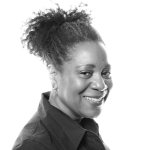 Patricia Sampson is the Director of the Bookstore Resource Center at
Patricia Sampson is the Director of the Bookstore Resource Center at 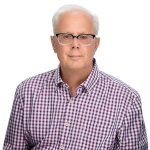 Known as “The Daily Performance Expert,” Doug Fleener is an ex-addict turned successful CEO, business advisor, keynote speaker, and coach. His extensive experience and journey of over 30 years in recovery and business give him a unique perspective with proven expertise and fast, high ROI results. His success started with his failures and the low-point in his life.
Known as “The Daily Performance Expert,” Doug Fleener is an ex-addict turned successful CEO, business advisor, keynote speaker, and coach. His extensive experience and journey of over 30 years in recovery and business give him a unique perspective with proven expertise and fast, high ROI results. His success started with his failures and the low-point in his life.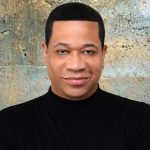 Forrest Tuff is the CEO and Founder of
Forrest Tuff is the CEO and Founder of 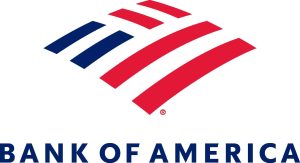
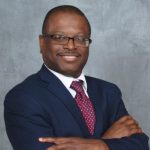 Michael Williams holds the corporate title of Senior Vice President and a Small Business Banker Manager for
Michael Williams holds the corporate title of Senior Vice President and a Small Business Banker Manager for  Laneisha Roberts, Co-Founder and CEO of
Laneisha Roberts, Co-Founder and CEO of 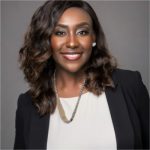 Kristin Bell, Co-Founder and COO.
Kristin Bell, Co-Founder and COO.

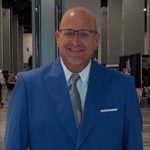 Mandy Aran is the CEO of
Mandy Aran is the CEO of 
 Aly Merritt is a former copy editor with a residual addiction to journalism, and is currently the Managing Director of
Aly Merritt is a former copy editor with a residual addiction to journalism, and is currently the Managing Director of 










